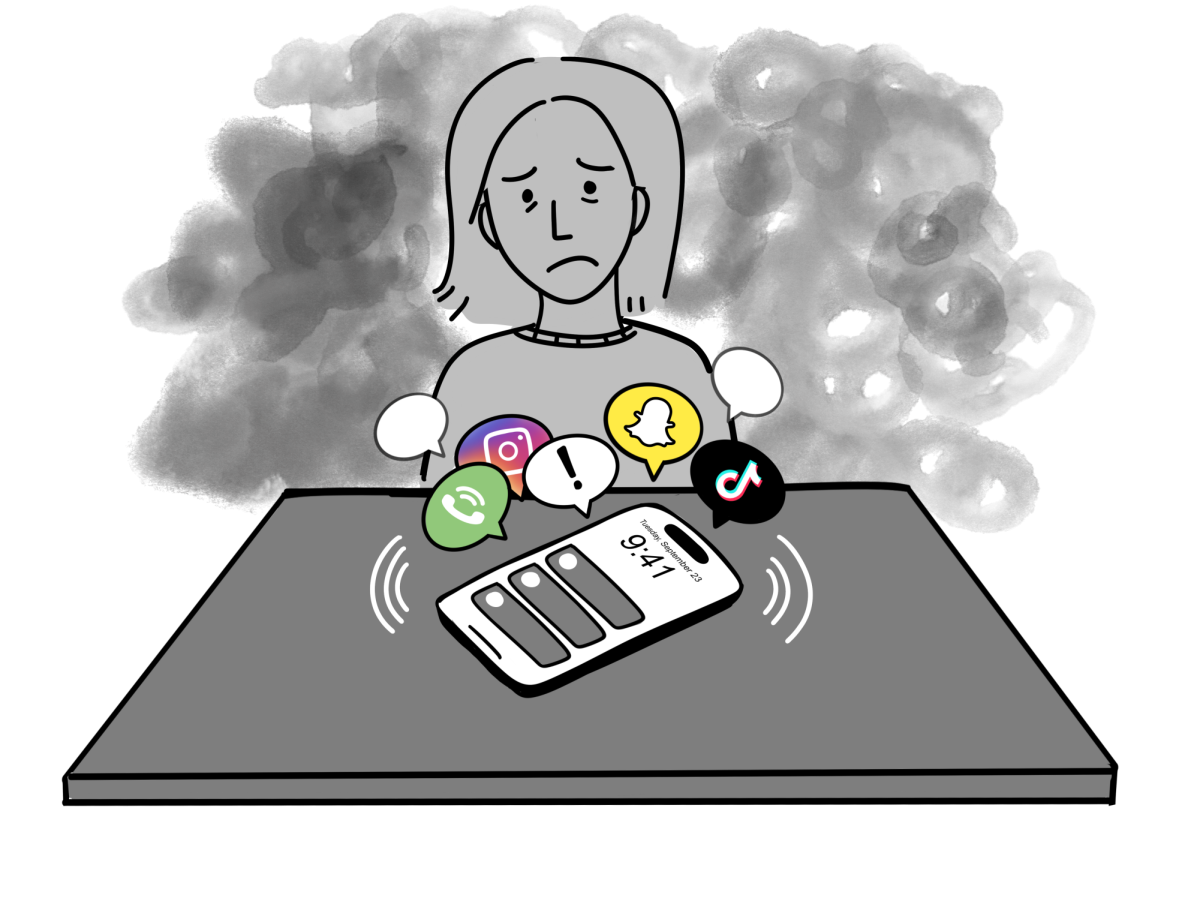
How many hours a day do you spend on your computer? For students who have opted to attend their school year online due to the coronavirus pandemic, the amount of time spent in front of a laptop screen has increased significantly. This raises many questions and concerns about mental and physical health, as well as the ability to retain the school experience over video conference calls. During the 2020-21 school year, LMSD has operated on hybrid, virtual, and, most recently, in-person four day learning. The varying schedules all contain pros and cons; however, learning completely remotely has proven to be challenging both physically and mentally for students. In order to address negative physical and mental health effects of remote learning, LMSD should reduce the amount of assignments per class and introduce more breaks in the schedule due to lack of student motivation and excessive stationary screen time.
This issue is currently negatively affecting students’ motivation and energy levels. When a student is learning in front of a screen, the experience is often inferior to that of a classroom setting. Virtual learning fatigue, or “Zoom fatigue,” has swept through the school district, leaving behind excessive tiredness and decreased motivation. According to High Focus Centers, when interacting face-to-face with friends and teachers, the brain uses social cues such as “facial expressions, eye contact, and body language when processing conversation.” When these indicators are removed, it becomes difficult for students to stay alert and attentive. As a result, those who attend class primarily on Zoom are experiencing difficulties retaining information and understanding concepts. A lighter student workload would succor this issue because the less assignments that virtual learners need to complete, the less time they spend in Zoom meetings and in front of their screen.
Even as classes have been shifting back to in-person, they should be reimagined with more breaks in between classes and, for students still outside the building, less class time spent on Zoom. The school system “is not built” to accommodate for a situation such as this, according to a report by the Economic Policy Institute, and therefore has resulted in an inadequate learning experience for those who remain at home during the hybrid and four-day in person schedules. To combat the fatigue, excessive screen time, and heightened stress that virtual learning brings, students should be allowed and encouraged to take breaks from their computers, and a lighter workload should be assigned. If students are not required to be in front of their laptop to complete as many assignments and attend class for such longevity, the mental and physical consequences would not be as adverse.
Even young children have been affected by this issue. For some elementary and pre-elementary school students, spending seven hours a day in front of a screen can contribute to “thinning of the brain’s cortex, the area related to critical thinking and reasoning,” according to a key National Institutes of Health study in 2018. The interruption of brain development is scary for parents, teachers, and students alike; thus, taking extended breaks from the computer is crucial. Additionally, aside from physical health concerns, too much screen time is detrimental to students’ mental health. Some parents have expressed concerns over the virtual learning schedule carrying into future endeavors, dreading that “children will start foregoing physical and social activities for digital pursuits. Some also fear that too much screen time may suck the joy out of the educational experience,” according to an EdSource article. We should make taking a break from the computer a priority to preserve the mental and physical health of students, even if that means thinning the workload and introducing longer, screen-free gaps in the school day, even for those who are still making the transition back to in-person learning.
In order to address negative physical and mental health effects of remote learning, LMSD should reduce the amount of assignments per class because of lack of student motivation and introduce more breaks in the schedule due to lack of student motivation and excessive stationary screen time. When students spend hours on Zoom classes, then spend hours after school working on homework assignments, negative effects ensue, such as excessive lethargy. Additionally, too much time spent in front of a computer screen is detrimental to brain development and halts physical activity. In order to combat these negative developments during the 2020-21 school year, teachers should be exceedingly cognizant of these factors when assigning homework. However, teachers and school administrators are not the only ones who can help. Some ideas for you to reduce your daily amount of screentime are to set timers to remind yourself when to close your screen, take brief walks around your workspace or neighborhood whenever possible throughout the day, and request paper copies of textbooks and worksheets if available.





